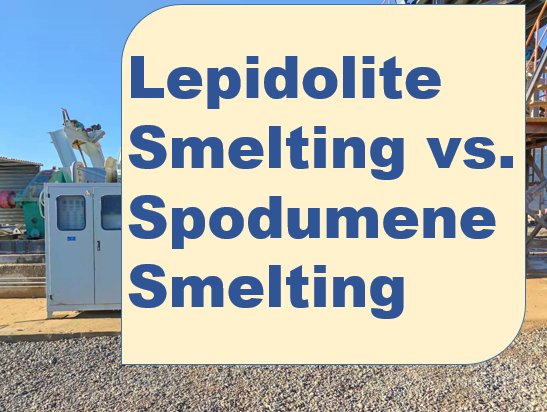Lepidolite Smelting vs. Spodumene Smelting: A Comparative Insight into Lithium Extraction
2024-08-27 Xinhai (1675)
2024-08-27 Xinhai (1675)
If you have any questions, please contact us through the following ways, we will give you more and better assistance!

Lithium, a cornerstone in the energy and technology sectors, is predominantly extracted from two sources: lepidolite and spodumene. Both minerals serve as the bedrock for lithium production, but their smelting processes differ significantly due to their distinct chemical compositions and structures. This article aims to dissect the smelting processes of lepidolite and spodumene, offering a comprehensive comparison that highlights the unique aspects and challenges of each method.
Lepidolite, a lithium-rich mica, contains not only lithium but also aluminum, potassium, and other elements, which complicates its smelting process.
Preparation: The beneficiation of lepidolite typically precedes smelting, focusing on concentrating the lithium content and removing impurities.
Calcination: Lepidolite undergoes calcination at high temperatures to remove volatile components, such as water, and to prepare the material for the smelting process.
Smelting: The calcined lepidolite is then subjected to high-temperature smelting, often in a furnace, where it reacts with a reducing agent to extract lithium.
Chemical Processing: The smelted product often requires further chemical processing to refine and purify the lithium, which may involve leaching and precipitation techniques.
Spodumene, a hard-rock lithium source, is simpler in composition, primarily consisting of lithium aluminum silicate.
Concentration: Similar to lepidolite, spodumene begins with a concentration process to increase the lithium content.
Sintering: Spodumene concentrate is often sintered to form a porous, solid mass that is more suitable for smelting.
Pyrometallurgical Smelting: Spodumene is then smelted in a pyrometallurgical process, which may involve fluxes and high temperatures to reduce the ore to its metallic components.
Refining: The smelted lithium is refined through electrolysis or other methods to produce high-purity lithium metal or lithium compounds.

Complexity: Lepidolite smelting is generally more complex due to the need for additional chemical processing steps to deal with its varied composition.
Temperature and Energy Requirements: Both processes require high temperatures, but the specific energy consumption can vary based on the purity of the feedstock and the efficiency of the smelting furnace.
Environmental Impact: Spodumene smelting tends to have a more straightforward environmental profile, while lepidolite's diverse elements may lead to more complex waste management challenges.
While both lepidolite and spodumene smelting processes aim to extract valuable lithium, the journey from ore to metal is markedly different. Lepidolite's diverse composition necessitates a more intricate smelting and refining process, whereas spodumene's simpler makeup allows for a more direct approach. As the demand for lithium continues to rise, understanding and optimizing these smelting processes will be critical for meeting the growing needs of the energy and technology sectors.